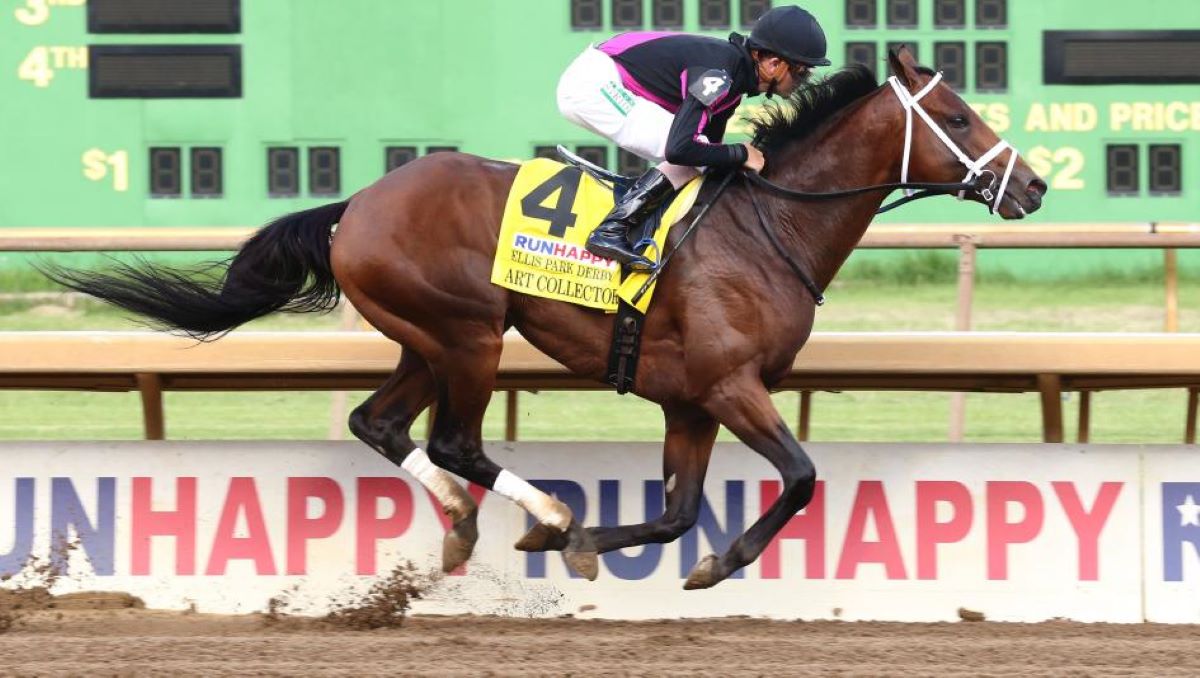When it comes to handicapping the Kentucky Derby, the speedy rule of thumb used to be simple. Bring your thumb down to the horses who ran at least a 95 Beyer Speed Figure, and begin your handicapping from there.

That’s an easy place to start, considering 25 of the last 28 Derby winners came into the gate with at least a 95 Beyer somewhere on their resume. In a normal year, when the Derby ran on the first Saturday in May, that’s where you’d start. Then, you’d cull the herd further by finding any horses clocking a triple-digit Beyer.
This year’s Derby contenders had four extra months to reach that threshold. That explains why favorite Tiz the Law leads a six-horse, triple-digit Beyer contingent into the starting gate for Saturday’s Derby. As for that 95 starting threshold? Eleven of the 17 starters meet that requirement.
Even in an unusual year, that hardly narrows things down.
Start the Speedometer at 100
For handicapping purposes, that means it’s a good idea to throw out the 95 benchmark and start at 100. That’s never a bad place to start anyway, considering the eventual winner usually has a triple-digit Beyer on their resume.
Just like you can throw out this year as a typical year on the speed-handicapping front, you can chuck last year as well. Country House won the Derby without a triple-digit Beyer, but Maximum Security – who crossed the finish line first before being disqualified – clocked two before the Derby.
So starting with a minimum Beyer of 100, who belongs on your tickets? Start, of course, with heavy favorite Tiz the Law, whose career-best 109 came in his last race – the 1 ¼-mile Travers Stakes. From there, you find Thousand Words (104), who clocked his best Beyer while upsetting Honor A.P. in the Shared Belief at Del Mar earlier this month.
Derby Contenders Got Hot Over the Summer
Probable second-favorite Art Collector earned his 103 in the Blue Grass Stakes at Keeneland last month. When he ran that 103, Art Collector clocked the fastest Beyer of any 3-year-old to date. Honor A.P. earned his 102 in the Santa Anita Derby in early June. Both Authentic and Ny Traffic clocked their 100 Beyers at last month’s Haskell Stakes at Monmouth Park, appropriate, considering Authentic beat Ny Traffic by a nose.
Had this been a normal year with a May Derby, Tiz the Law (100) would have had the only three-digit Beyer among the current Derby crop. Honor A.P.’s 95 would have put him in the mix, but Art Collector’s 87 equals the second worst among current Derby entrants.
Best 2020 Speed Figures Among Kentucky Derby Entrants
The chart below shows the various speed ratings posted by this year’s Kentucky Derby entrants.
| Beyer Speed Figures | Brisnet Speed Ratings | TimeformUS Speed Figures | |
| Tiz the Law | 109 | 115 | 126 |
| Art Collector | 103 | 104 | 124 |
| Honor A.P. | 102 | 108 | 123 |
| Authentic | 100 | 107 | 121 |
| Thousand Words | 104 | 104 | 124 |
| Ny Traffic | 100 | 107 | 120 |
| Max Player | 99 | 107 | 118 |
| King Guillermo | 99 | 102 | 120 |
| Money Moves | 98 | N/A | N/A |
| Sole Volante | 96 | 102 | 113 |
| Storm the Court | 90 | 102 | 113 |
| Enforceable | 91 | 95 | 111 |
| Attachment Rate | 95 | 98 | 120 |
| Major Fed | 87 | 99 | 109 |
| Necker Island | 87 | 98 | 114 |
| Finnick the Fierce | 88 | 97 | 112 |
| Winning Impression | 82 | 91 | 109 |
That’s what four extra months of maturing along an elongated Derby trail brings you: faster, more seasoned horses.
Taking that another step and look at two other speed figure measurements, the Brisnet and TimeformUS, and you’ll see that those horses are the only six with triple-digit ratings in all three. It’s a testament to how four extra months of racing can mature 3-year-olds that 13 horses own at least one triple-figure Brisnet.
Tiz the Law Already Sets Historic Pace
Five horses, Tiz the Law, Honor A.P. Authentic, Ny Traffic, and Max Player own at least one Brisnet better than 10 of the last 20 Kentucky Derby winners. And Tiz the Law’s 115 Brisnet from the Travers bettered the career Brisnet number of every Derby winner this century.
No matter which measurement you use, speed ratings are only one weapon in the horseplayer’s arsenal. Yes, they make it easy to cull the Necker Islands and Winning Impressions from the contending herd, but they work best if you pair them with pace and trip handicapping that takes a race’s pace and a horse’s trip into account.
How did the pace of a given race set up for a horse’s running style? Was it conducive to closers? Pace-setters? Stalkers? If a closer, such as Max Player or Sole Volante encountered a slow pace that neutralized their strength, how did that affect them? That requires looking at the running styles of all of the horses in the field.
And how was that horse’s trip? How much trouble did they get into – or avoid? Did the jockey help or hinder the horse’s chances?
None of that shows up in a horse’s speed figures. But since speed wins races, it’s the logical place to start.












Great Accurate Reliable Trustworthy Faithful Truthfulness Reporting